Terrington rectors and rectories
Introduction
In 1893 rector Samuel Wimbush, with the aid of the Rev. Dr. Cox, rector of Barton-le-Street, drew up a list of rectors of Terrington and their patrons from 1234 to the present day, extracted from the records at the Diocesan Registry at York.
The Rev. J. Charles Cox was a well-known antequarian and author of a number of books including How to write the history of a parish and the Wimbush and Cox families were close friends.
Samuel Wimbush and Dr Cox attended the Diocesan Registry in August and September 1893 to work on the records and in October Dr Cox came for lunch at Terrington Rectory to check Samuel's list.
In 1894 Dr Cox left Barton-le-Street for a living in Northamptonshire but their families remained in close contact. In fact, in 1898, Samuel’s daughter. Dorothy, and Cox’s son, Arthur, were married by Samuel in Terrington church, despite considerable misgivings on the part of Samuel, who considered Arthur’s prospects to be poor.
The list of rectors is displayed on two boards on the wall opposite the door of the church and has since been added to.
| Date of Institution | Reign | Rector | Patron |
|---|---|---|---|
| 1234 July 2 | Henry III | SIMON DE NEVILL | N de Nevill |
| 1247 June 14 | Henry III | HENRY DE SCHELTON | Sir Anketill Malorie |
| 1311 May 8 | Edward II | ROBERT DE WODEHOUSE | Sir Miles Stapleton |
| 1317 Nov 23 | Edward II | THOMAS DE GRAYNGHAM | Sir Nicholas Stapleton |
| 1331 Oct 27 | Edward III | ROGER BASSET (Acolite) | Sir Nicholas Stapleton |
| 1349 Aug 18 | Edward III | WILLIAM de APPLETON | Sir Anketin Salvayne |
| 1354 April 21 | Edward III | JOHN de AMPULFORD | Sir Miles Stapleton |
| 1356 Sep 20 | Edward III | HENRY de MELBORNE | Sir Miles Stapleton |
| 1370 May 30 | Edward III | JOHN de TYVERINGTON | - |
| 1385 May 21 | Richard II | THOMAS de KYRKETON | Thomas Gower |
| 1402 Sep 26 | Henry IV | JOHN MIDILSBURGH | Sir Thomas Metham |
| 1422 Oct 29 | Henry VI | ROBERT THWAYTES | King Henry VI during the minority of Thomas Metham a Royal Ward |
| 1440 Dec 15 | Henry VI | THOMAS TONGE | Thomas Metham |
| 1455 July 9 | Henry VI | JOHN SHIRWOOD - B.D. | Sir John Langton FOR HIS TURN |
| 1467 May 26 | Edward IV | ROBERT WITHAM | John Earl Of Northumberland FOR HIS TURN |
| 1481 Aug 14 | Edward IV | HENRY VAVASOUR | Sir Thomas Metham |
| 1492 May 14 | Henry VII | THOMAS DANBY | Sir James Danby |
| 1510 April 4 | Henry VIII | WILLIAM BURBANK | Archbishop of York |
| 1562 | Elizabeth | EDRIC OTBY | - |
| 1608 Aug 1 | James I | DANIEL LINDLEY M.A. | Thomas Talbot and Thomas Atkinson FOR THE LATE Sir Thomas Danby |
| 1608 Oct 12 | James I | THOMAS DODSON | Christopher Danby |
| 1625 July 20 | Charles I | EDWARD HINDSLEY M.A. | Jordan Metham |
| 1661 June 6 | Charles II | SAMUEL PAWSON | John Geldart |
| 1671 Dec 3 | Charles II | ELIAS MICKLETHWAITE | John Geldart |
| 1681 Feb 8 | Charles II | ELIAS MICKLETHWAITE M.A. | Rev Marcus Micklethwaite FOR HIS TURN |
| 1721 July 22 | George I | CHARLES MAN M.A | William Baines Esq. FOR HIS TURN |
| 1734 Dec 18 | George II | LEONARD THOMPSON L.L.B | Leonard Thompson Esq. |
| 1765 June 3 | George III | JOHN CAYLEY L.L.B | Barnabas Legard Esq. William Dawson AND Arthur Ricard Gent. FOR HIS TURN |
| 1823 Oct 3 | George IV | CHARLES HALL M.A. | John Hall Esq. |
| 1865 March 28 | Victoria | SAMUEL WIMBUSH M.A. | Samuel Wimbush Esq. AND Henry Wimbush Esq. |
| 1908 Oct 5 | Edward VII | JAMES WIMBUSH M.A. | Judith Wimbush |
| 1933 Oct 23 | George V | BERNARD COCKIN M.A. | Judith Wimbush |
| 1940 Dec 6 | George VI | THOMAS EDWARDS M.A. | Judith Wimbush |
| 1958 Feb 17 | Elizabeth II | GILBERT MORETON | Archbishop Of York |
| 1964 June 10 | Elizabeth II | WALTER BESWICK | Archbishop Of York |
| 1986 July 31 | Elizabeth II | EDWIN CHAPMAN B.A. | Archbishop Of York |
| 1998 March 25 | Elizabeth II | CHRISTOPHER ELLIS M.A. B.D. | Archbishop of York & Hon S.B.Howard |
| 2006 March 20 | Elizabeth II | CHRISTOPHER PARKIN | Archbishop of York & Hon S.B.Howard |
| 2012 July 9 | Elizabeth II | TAFF MORGAN | Archbishop of York & Hon S.B.Howard |
| 2023 March 14 | Charles III | DOUGLAS L. ROBERTSON | Arch.b of Canterbury |
There is information about the rectors in the two 'Red books' in the General account section of the website:
The patron is the person who holds the advowson - the right to nominate the rector for approval by the bishop. Patronage could be bought and sold and inherited, and often two or more parties could agree to take turns in nominating the rector. This could lead to disputes with different people nominating different rectors at the same time.
Plurality (the holding by one person of more than one rectory) was common. The rector would then pay a curate to carry out his duties in the parish, although this could lead to complaints by parishioners who felt they were being neglected. The system was clearly open to abuse and measures were taken to clamp down on it. The Plurality act of 1835 forbade rectors from holding more than one rectory where the populations or values were above specified limits or where the parishes were more than ten miles apart.
The rector had the benefit of a house, the glebe (land owned and farmed for the benefit of the rectory) and tithes (10 per cent of the produce of other land in the parish).
As well as catering for the spiritual needs of the parishoners, the rector was responsible for the maintenance of the fabric of the chancel of the church and for administering donations to the poor.
Many of the early rectors are just names but we can say a little about a few of them. Below is information about:
John Shirwood (rector 1455-1467) and Robert Witham (rector 1467-1481)
Terrington appears to have have been John Shirwood’s first living after his education at both Cambridge and Oxford. The patronage of the Terrington living was then held by Sir John Langton who held the manor of Mowthorpe. The Langton family played a leading part in the government of York, where they dominated the civic hierarchy and were closely associated with the Nevilles. Sir John’s mother was a Neville.
John Shirwood went on from Terrington to much greater things, through the patronage of George Neville, brother of Warwick the Kingmaker. Shirwood became chancellor of Exeter Cathedral in 1460, archdeacon of Richmond in 1465, and finally bishop of Durham in 1484, until his death in 1493. He spent many years in Rome, where he learnt Greek, he built up a considerable library, and was reputed to be a great humanist scholar. Unfortunately, his only surviving writing is a Latin treatise on the game of Arithmomachia, a sophisticated variant of chess which, he states in his preface, he taught to Archbishop Neville in 1475 during a visit to Calais.
Shirwood seems to have been in the habit of holding several posts at the same time, so it is unlikely that the residents of Terrington saw much of him.
Terrington’s connections (however tenuous) with power in the land continued when the patronage passed to John Neville, Earl of Northumberland, another brother of Warwick the Kingmaker, who appointed Robert Witham (rector 1467-1481). According to Dugdale’s Visitation of Yorkshire, Robert Witham’s brother was Chancellor of the King’s Exchequer under Henry VI and Edward IV and was buried at Sheriff Hutton.
Daniel Lyndley (rector 1608-1625)
According to Samuel Wimbush's list, Daniel Lyndley was rector from 20 July 1608 and Thomas Dobson became rector on 12 October 1608, less than three months after Lyndley, and the next rector appears in 1625. The displacement of Lyndley may have occurred when the patronage changed hands but Lyndley appears to have remained in the parish and to have been reinstated as rector after action in the courts.
The Terrington Parish Register shows Daniel Lyndley, parson of Terrington, married to Marie Wilkinson on 15 April 1608 at Burlington (now Bridlington). Daughter Marye was baptised in 1611 and Luce in 1612, but Mary was buried in 12 June 1613, all at Terrington. Daniel, still parson of Terrington, married Jane Faucet at Rufforthe on 17 November 1614. Son Thomas was baptised in 1618 and Daniel in 1620, at Terrington.
In 1621, parson Daniel witnessed a maintenance contract for keeping the church clock in working order. William Wilson, clockmaker of the City of York, after repairing the clock, agreed as follows (Terrington Parish Registers transcription, page 2):
Memorandum That this year 1621 upon the 16th day of Aprill I William Wilson of the Cittie of Yorke Clockmaker have received of the Churchewardens of Terrington for repaireing the Clock theire – 37s 8d and doe farther promise to repare the same during my naturall life and come to Terrington upon ten dayes warning for five shillings yearely to be paide unto me, that ys uppon Whitson [tide erased] Monday come a twelvemonethe five shillings and soe yearely during my lyfe findeing all things belongeing theire unto but wirs plumes and coards. In witness whearof I have here setto my hand.
In the presence of William Wilson Daniel Lyndley Thomas Peacocke + Richard Proude.
Churchwardens for the yeare of our lord 1623.
Richard Moore. Laurence Peacocke
Daniel Lyndley was buried at Terrington on 19th July 1625.
Leonard Thompson (rector 1734-1765)
In the 199 years from 1734 to 1933, Terrington had just 5 rectors: Leonard Thompson (31 years), John Cayley (58 years), Charles Hall (42 years), Samuel Wimbush (43 years) and James Wimbush (25 years).

Leonard Thompson was rector from 1734 to 1765. His grandfather Edward Thompson (1639-1701), wine merchant, Lord Mayor of York in 1683, MP for York 1689-1701, purchased Sheriff Hutton Park in 1666. It passed to his oldest son Leonard (1674-1744) and then to Leonard’s brother Richard (1676-1753), also wine merchant and Lord Mayor of York in 1708 and 1721.
Rev Leonard Thompson was Richard’s second son. He was educated at Trinity College, Oxford and married Hannah Bawtry of Foston 1732. He was rector of Brandsby 1733-83, of Acomb, and of Terrington.
In 1743 the living was said to be worth £150 a year and the living of Brandsby was worth over £100 a year. In that year the people of Brandsby complained to the archbishop about the rector because he allowed the curate serving their church a meagre £25 a year in salary, and further offended them by leasing the parsonage house to a Roman Catholic.
Terrington Parish Register pages 159 - 161 contains a glebe terrier (an inventory of lands and property in the parish owned by the Church) of 1760 which was ‘deliver'd into Court at the primary Visitation of His Grace the Archbishop of York held at Malton in the Year of our Lord one thousand seven hundred & sixty.’
It specifies:
One parsonage House, one Dove House, one Orchard, one Garden, one large Court before ye House, one little Garden & a little house adjoining besides the Gate which goeth into the Town now repaired and converted to a School House. One Barn beyond the Church Yard, two Stables, one Coach House, with other convenient out-Houses, one Croft adjoining thereto with a little orchard at the lower end of it.
The terrier goes on to describe the location of over a dozen landholdings scattered around the parish plus details of tythes, which are paid in kind on everything except calves, for which there is a monetary payment. Every man paid a hen at Christmas. The hamlets seem to be subject to a temporary exception: ‘Wigginthorp, Ganthorp & part of Mouthorpe pay two shillings in the pound at the present during pleasure, otherwise pay all in kind as Terrington’.
Death, marriage and birth also cost money: 'Mortuaries are paid for ev'ry Householder yt dies, according to law. Two pence at Easter for ev'ry one that is above sixteen Years of age, those that keep House pay it for their Tenants; those that are married pay one shilling and sixpence if it be without Licence; those that are churched seven pence; Sevenpence is likewise paid for ev'ry one that is buried.'
For hay and corn it specifies: 'As for the tything of Hay when it is in cock & ready to lead, the owner before he leads it gives the Parson notice to send one to tyth it, who begins to tyth it where he pleases. The tything of Corn is after this manner—they do not set up their Corn in Stook, but the tything man when the Shearers are about the Lands End begins to tyth & throws out ev'ry tenth Sheaf; And if He be not there when they have cut the Land out, the owner sets one of his Shearers to throw out ye tenth sheaf.'
John Cayley (rector 1765-1823)
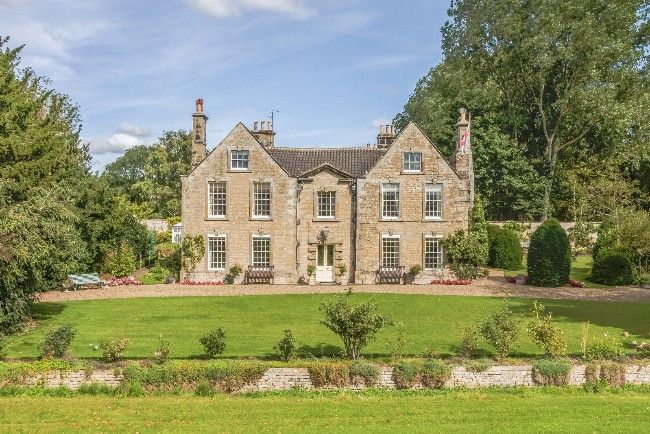
John Cayley was educated at Beverley School and at St John’s College, Cambridge. He was ordained deacon at York in 1763, and priest in 1765, and worked initially as a curate looking after one of his father’s Yorkshire parishes. He was Rector of Terrington from 1765 to his death in 1823.
He married his third cousin Frances Cayley, a daughter of Sir George Cayley, 4th Baronet, and hence aunt of Sir George Cayley, 6th Baronet, the aeronautical pioneer who managed the first manned flight (sensibly, he used his coachman as pilot).
From 1793 John Cayley was also priest-in-charge at All Saints, Brompton by Sawdon, where he inherited Low Hall in which he apparently lived during the latter part of his life.
Nathaniel Hodgson was permitted to serve as curate from 1770 (though he was appointed rector of Scawton in 1772), Robert Freer was licensed as curate in 1796, and Luke Dennis was licensed as curate in 1818. The 1823 Baines Directory says that there was a curate, Rev. Luke Dennis.
Charles Hall (rector 1823-1865)
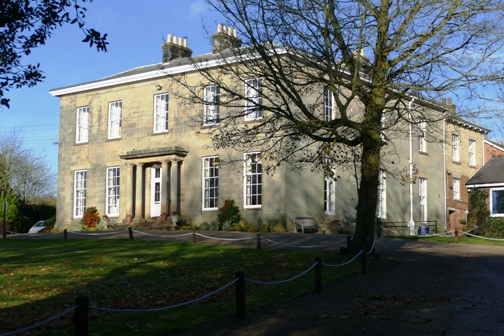
Charles Hall built a new rectory, now Terrington Hall School, in 1827, probably on the site of the earlier rectory described in the Glebe Terrier of 1760.
In 1827 Charles Hall received a dispensation to be also rector of Routh. In 1828 the serving curate in Terrington, Luke Dennis, was also licensed as curate of Routh and Scarborough.
In the 1841 census, the Hall was occupied by Charles Hall, wife Mary, with 5 children, and 9 female and 2 male servants.
In 1851, Charles Hall, aged 53, wife Mary, aged 42, are at home with 3 children, aged 8 to 18, and 9 servants: governess, housekeeper, lady’s maid, laundry maid, housemaid, nurse, kitchen maid, groom and footman. None of the servants was born in Terrington, though 7 were born in Yorkshire. The governess was from Stafford and the lady’s maid was born in New York.
In the 1861 census, Charles and Mary are in the rectory with 4 children and 8 servants. With the 3 daughters aged 19 and upwards, the governess and nurse have gone, but an under lady’s maid has been recruited. All the servants except the lady’s maid had been born in Yorkshire, but only the groom (William Smith) in Terrington.
Charles Hall died on 12th December 1864. There is a plaque to his memory in the chancel of the church which records a sum of £60 raised by subscription on which the interest was to be given each year to the poor of the parish. Next to this is a plaque to Charles Hall's son, Samuel, who died on 4th October 1863 on his way to Australia, aged 25.
Samuel Wimbush (rector 1865-1908)
Samuel Wimbush became rector on 28 March 1865 and is important to the story of the village through the daily diary he kept through his time as rector up to his death in 1908. See the Samuel Wimbush page for more information.
James Wimbush (rector 1908-1933)
James Sedgwick Wimbush succeeded his father as rector in 1908, the patron being James's wife Judith. James was born in Terrington on 20th February 1866, the third child and third son of Samuel. He attended Haileybury School (on the site of the East India Company College) and in 1885 went to Oriel College, Oxford, where he graduated in 1889, having studied classics and history.
In 1891 he became curate of St. Columba, Southwick, Sunderland and in 1899 James married Judith Isabel Fox, the daughter of civil engineer Sir Charles Douglas Fox. Judith's grandfather, also a civil engineer, had designed the Crystal Palace in Hyde Park and her father designed many railways in South America and Southern Africa, including the Rhodesia railway system. In 1899, James and Judith went to Bulawayo as part of an Anglican mission to eastern and southern Africa and in April 1901, James and Judith's first child, James Christopher, was born in Bulawayo. A telegraph message saying “Son. All well. Wimbush” was sent to Sir Douglas Fox and from him on to Samuel Wimbush.
In April 1902 Judith seems to have been in England and Samuel gave his consent to his daughter Mary to return with Judith to Bulawayo for a year. In July 1903, Samuel baptised James and Judith's second child, Samuel Humphrey Wimbush, at St Mary Abbots Church Kensington. Judith was ill and not able to attend and James was still in Bulawayo.
James and Judith's next two children, Michael Douglas and John Bourchier, were born about 1904 and 1907 at Swainswick, near Bath, in Somerset.
In 1908, James became rector of Terrington on the death of his father. His fifth child (and fifth son), Richard Knyvet Wimbush, was born in 1909 at Terrington shortly after James had become rector.
In the 1911 census rector James is at home with sons Michael Douglas, 6, John Borchier, 3, and Richard Knyvet, 2, plus cook (Mary Bielby from Terrington), housemaid (from Old Malton) and nurse (Elsie Annie Bielby from Terrington). However, Judith and the eldest 2 children, James Christopher, 9, and Samuel Humphrey, 7, are in Grange-over-Sands on Morecambe Bay.
In 1933, James took photographs of his Terrington parishioners. Many of the photographs have hand-written comments, often noting that the subject was a member of the bowls club or the choir. James himself figures in a number of the photographs so he presumably had an assistant.
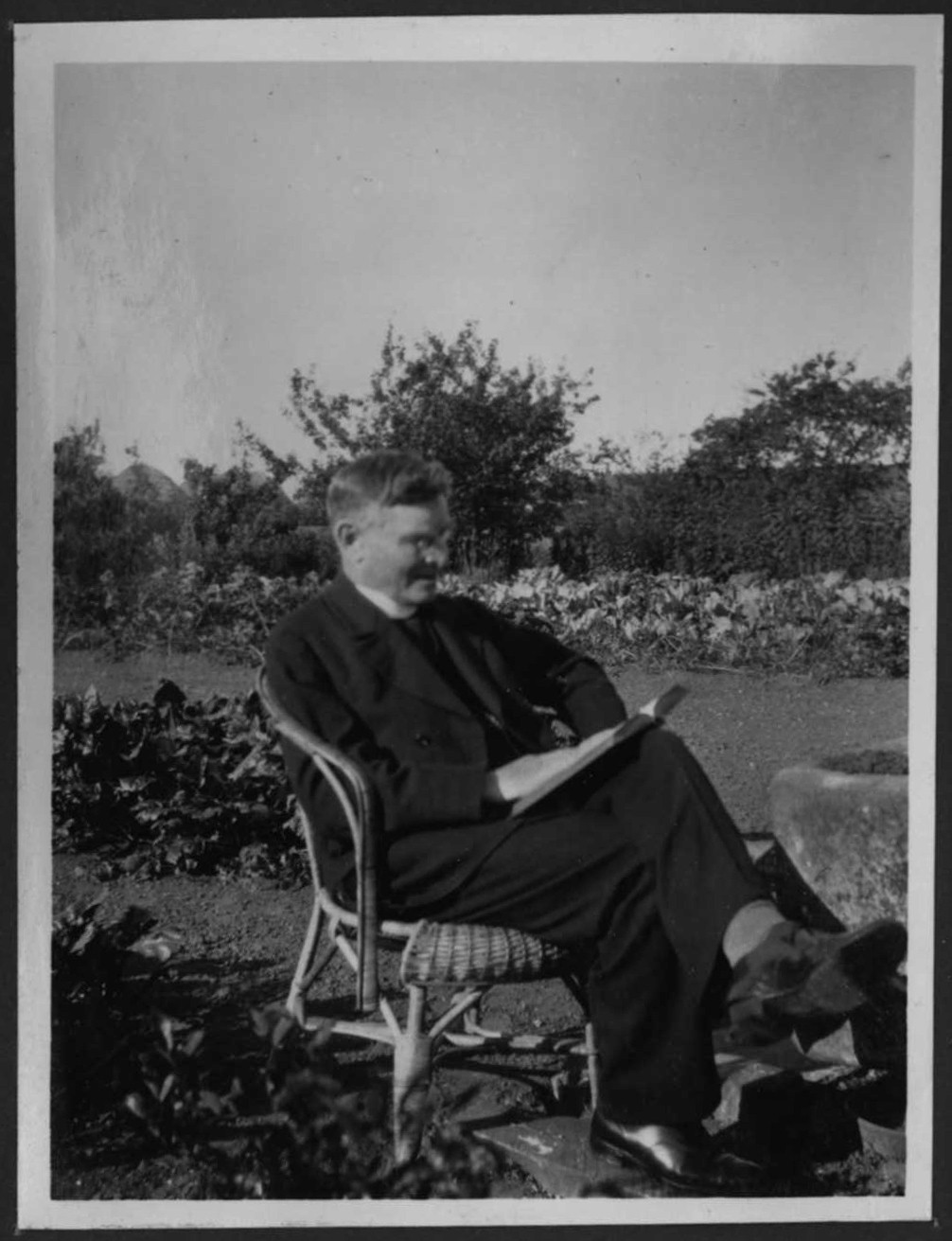
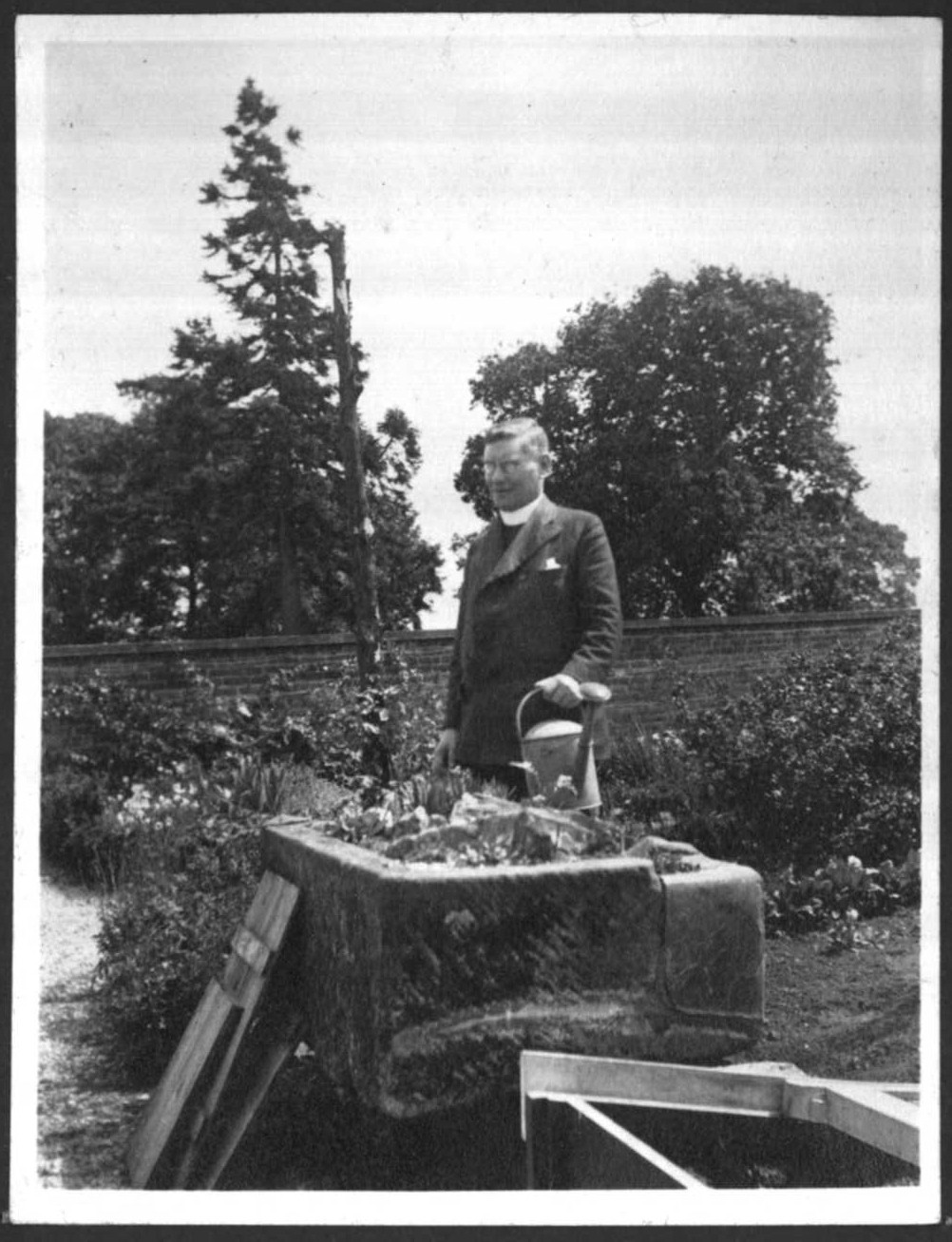
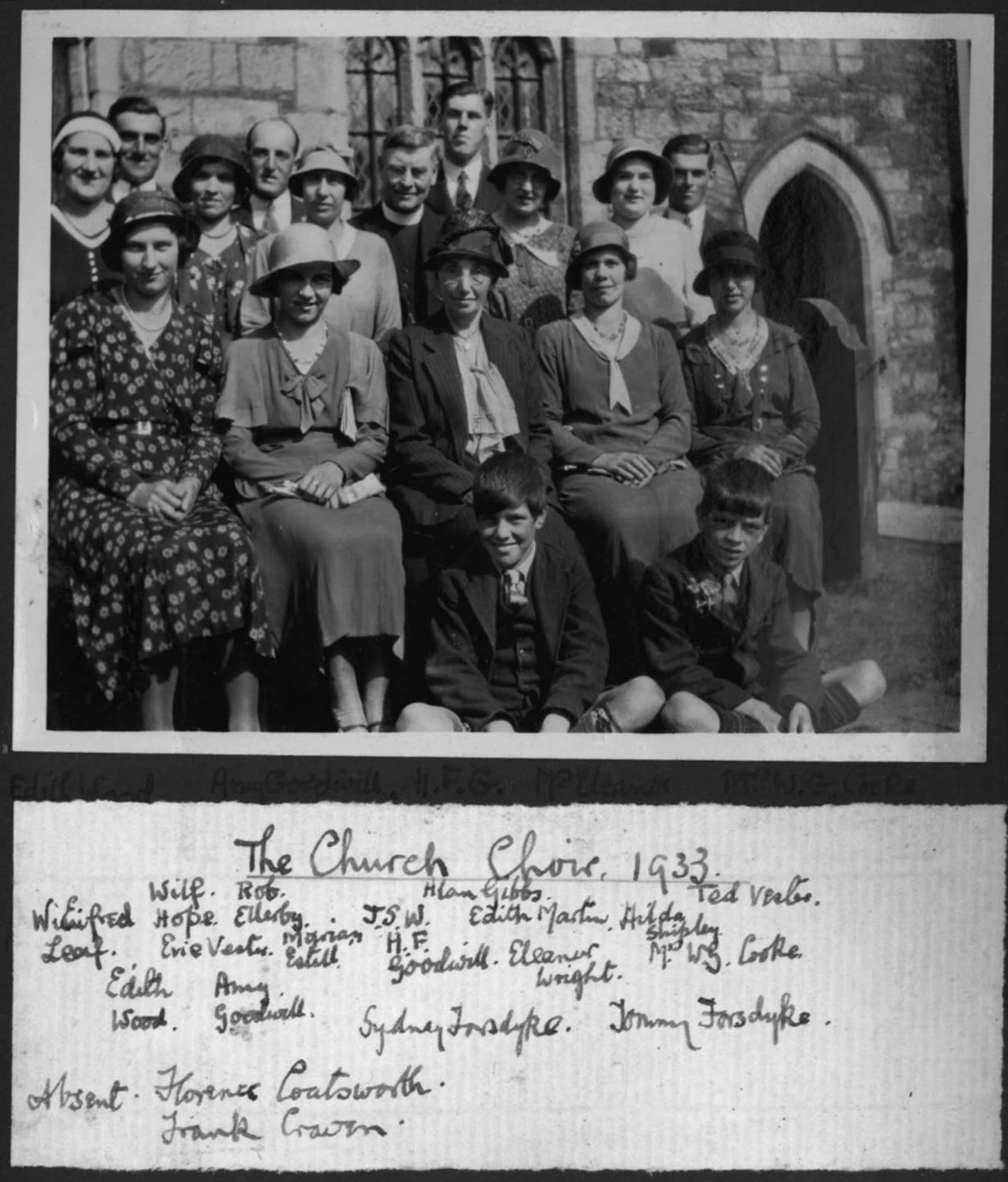
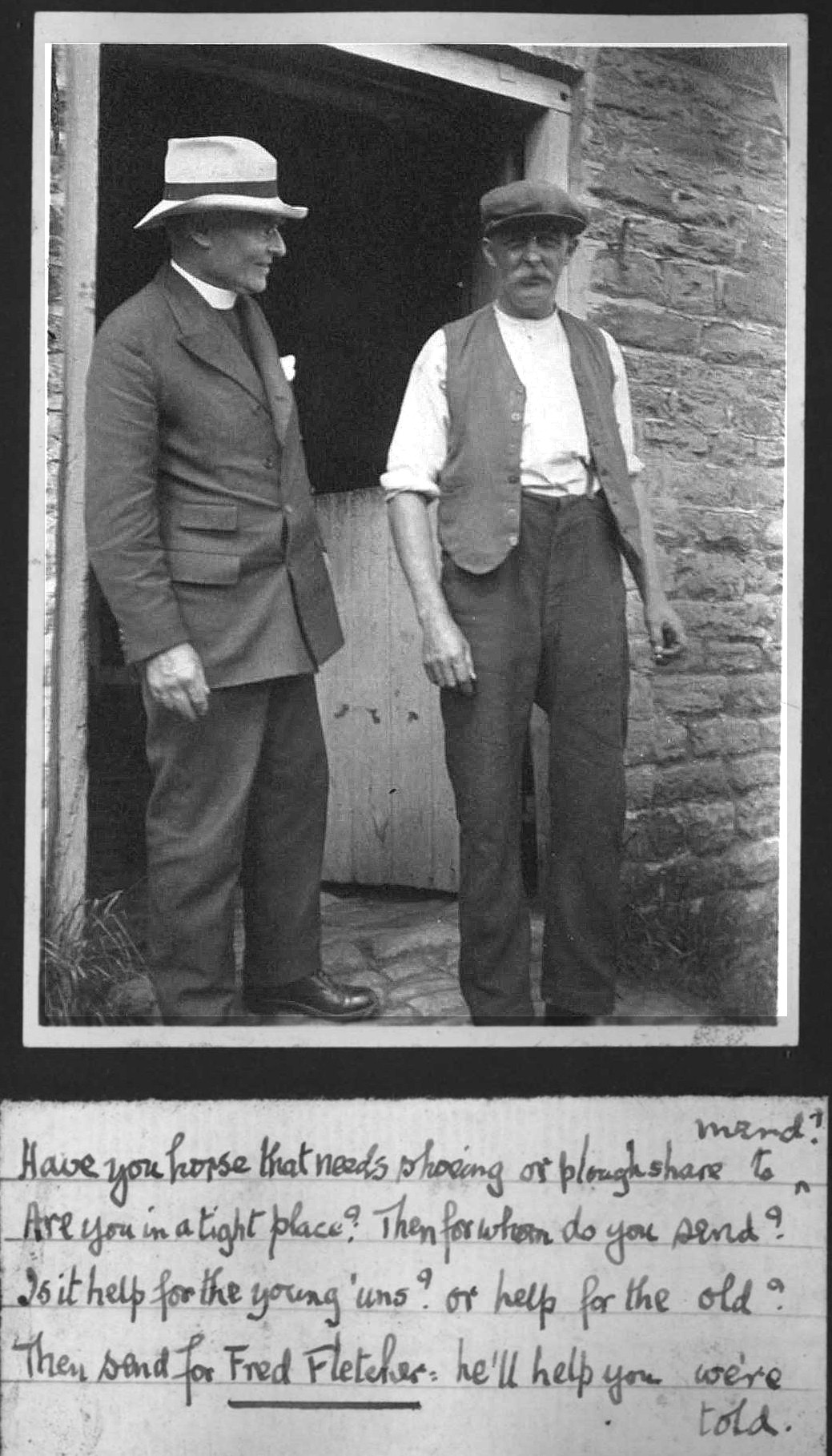
James retired later in 1933 and moved to Oxford, where he died in 1941, aged 74 or 75. Judith died in Exmouth, Devon in 1957. Their last son, born in Terrington, Richard Knyvet Wimbush was, like his father, educated at Haileybury School and Oriel College, Oxford. The church was clearly in the blood and in 1963 he became Bishop of Argyll and The Isles; he died in 1994.
